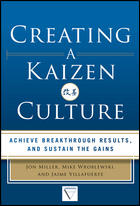The challenges facing business have always been daunting but they have increased exponentially in recent years. Being successful requires the ever more skillful balancing of seemingly opposing objectives. Applying certain key quality theories can be an important strategy to create a competitive advantage. For now let’s focus on the Taguchi Loss Function (TLF) and the Pareto principle.
Organizations that make good decisions to strike the right balance between performance excellence and cost containment will win in the marketplace. With more than 45 years in industry, in many roles, it’s been my experience that the application of the TLF and the Pareto theory can help tip the balance.
It might sound strange for some to hear this but there are still a lot of organizations which tend to essentially guess when identifying their biggest problem. In these organizations there’s little use of statistical theory because their application of limited resources tends to be ad hoc as there are few well-trained in-house quality professionals. Significant opportunity exists to gain competitive advantage if key quality theories are used as a guide to balance continual improvement with cost and profitability.
About thirty years ago I attended a lecture by Dr. Genichi Taguchi on robust engineering that included a segment on his loss function theory. His lecture certainly added to my understanding of the linkage of quality and business. His TLF theory first presents an insightful definition of quality. To paraphrase, ‘quality is the gap between how good something is and how good it could optimally be.’
In essence the TLF theory states that the bigger the gap, the larger the loss to those directly and indirectly involved. This is a powerful definition from a business perspective because it forces an organization to evaluate a process or product against its ultimate optimized potential, not against its current state. It also emphasizes that as a process deviates from optimal performance, almost everyone (except your competitor) loses.
While the TLF theory emphasizes the need to improve quality and performance to achieve profitability, it also takes a realistic approach. Of course it is near impossible, with today’s capabilities, to optimize processes and products to perfection where there is zero loss. The TLF theory, however, emphasizes improving quality and performance to a point where loss is minimized; thereby, achieving optimal balance between continual improvement and the cost to drive that improvement.
As someone who knew Philip A. Crosby and is a fundamental supporter of his quality is free theory, I also believe quality professionals must realize that even though we might inherently strive for perfection, we also must realize that most optimization projects have levels of diminishing returns. The drive to perfection often will not achieve the desired payback because it’s unrealistic! In a conversation with Crosby many years ago he agreed this could very well happen.
To maintain a good balance between improvement efforts and cost containment, management must withdraw resources from improvement projects that have a lower payback, even if they are not completely optimized.
The Pareto theory, rediscovered from Vilfredo Pareto’s studies and popularized by Dr. J.M. Juran, has proven, when used appropriately, to be a terrific aid in optimizing resources. The theory, also referred to as the Juran Pareto theory, is based on the 80-20 principle which states that 80% of the effects come from 20% of the causes. Application of the theory requires data to replace emotion, personal opinion to replace intuition or guesses.
Running a profitable business has been called the art of managing limited resources, and everyone, including competitors, has resource constraints. The answer is to apply those resources in a manner to achieve the greatest return on investment.
Quality professionals should use their knowledge to enable managers to realize that 80% of the organization’s problems have marginal impact on the organization and may never be completely resolved. Juran referred to this as the trivial (but useful) many. The remaining 20%, which Juran called the vital few, is a different story. Enlightened organizations that aggressively attack the vital few will go a long way to eliminate or greatly reduce 80% of their inefficiencies, make significant quality improvement, gain a major advantage in the competitive market by keeping costs down, and simultaneously, realize other major improvements. Without a doubt these are the organizations who will survive the onslaught of their competitors to win in the marketplace.
If you aren’t knowledgeable about either of these powerful quality principles, I’d advise learning about them ASAP and using them. Remember, your competitors are reading this column so if you hesitate, you lose. It is up to you, not the other person to take action.





